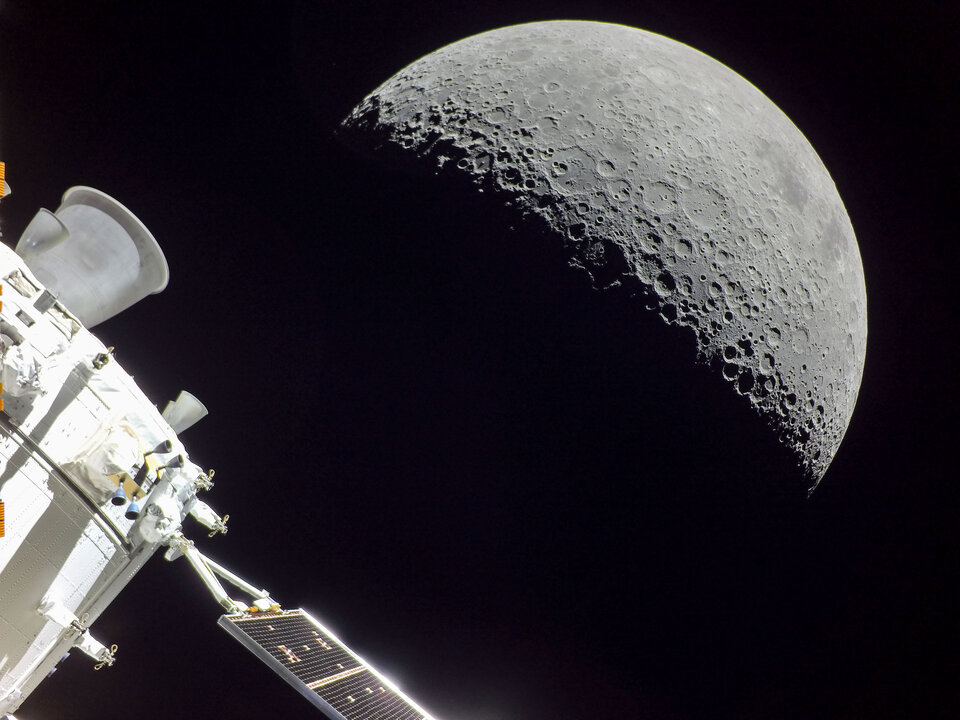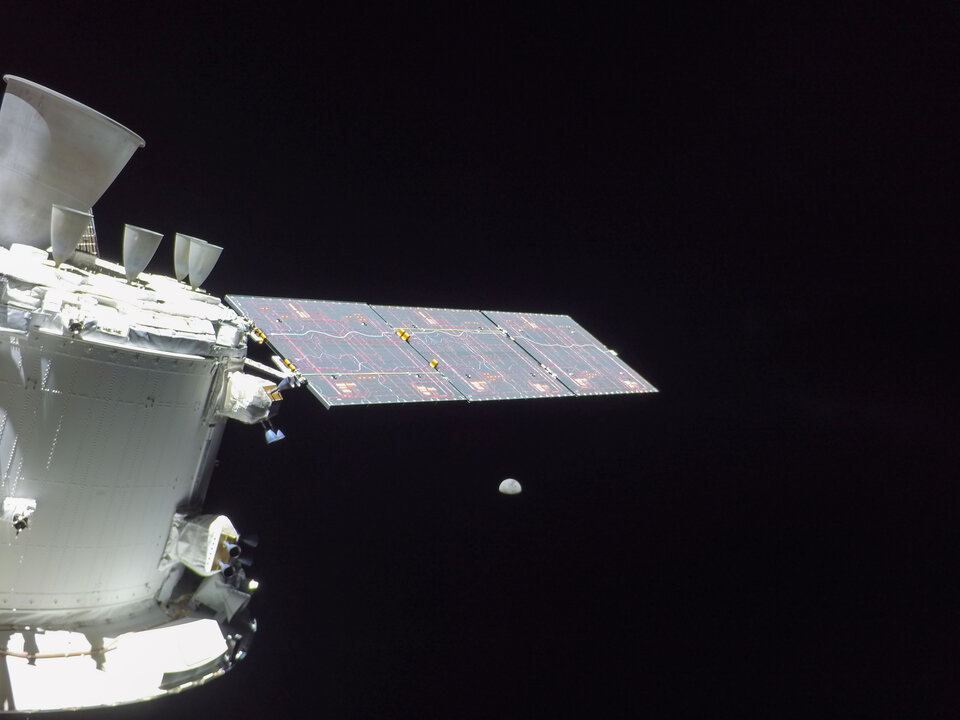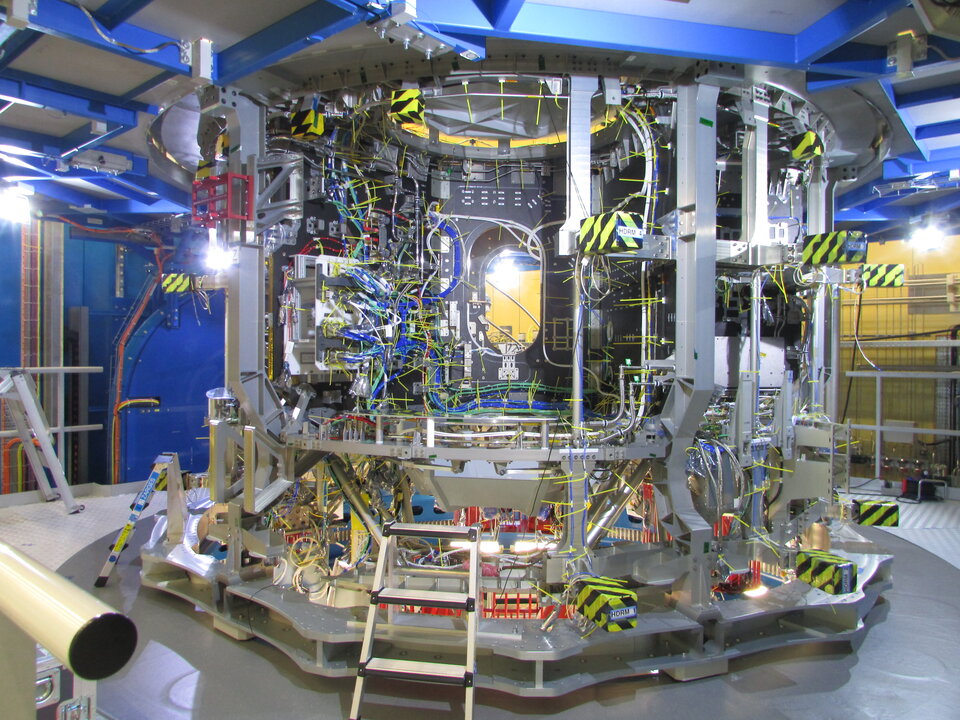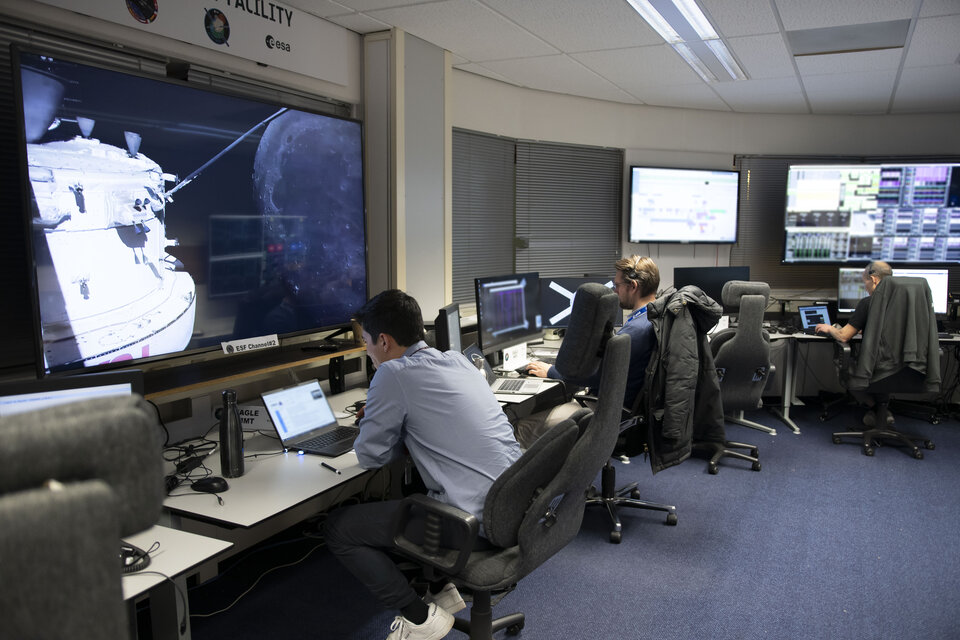11 December marked the end of the first Artemis Moon mission, when NASA’s Orion spacecraft splashed down in the Pacific Ocean at 17:40 GMT/18:40 CET, after travelling around the Moon and farther than any spacecraft designed to carry humans and return them to Earth.
Just 40 minutes before splashdown, and having delivered Orion safely back to Earth, ESA’s European Service Module (ESM) with its Crew Module Adapter detached from the capsule. As planned, the ESM burned up harmlessly in the atmosphere as the Orion Crew Module guided itself through re-entry, orienting the capsule with its own thrusters, releasing its three parachutes and gracefully splashing down off the coast of San Diego, USA. Recovery teams are collecting the capsule.
Artemis is the international lunar exploration programme that is taking humankind to the Moon. This first mission provided a first test of both NASA’s Space Launch System (SLS) and the Orion moonship that was propelled by the ESM’s 33 engines beyond the Moon and into deep space. Future European Service Modules will provide electricity, propulsion and cabin thermal control for astronauts on lunar missions as well as breathable atmosphere and drinking water.

Just 40 minutes before splashdown, and having delivered Orion safely back to Earth, ESA’s European Service Module (ESM) with its Crew Module Adapter detached from the capsule. As planned, the ESM burned up harmlessly in the atmosphere as the Orion Crew Module guided itself through re-entry, orienting the capsule with its own thrusters, releasing its three parachutes and gracefully splashing down off the coast of San Diego, USA. Recovery teams are collecting the capsule.
Artemis is the international lunar exploration programme that is taking humankind to the Moon. This first mission provided a first test of both NASA’s Space Launch System (SLS) and the Orion moonship that was propelled by the ESM’s 33 engines beyond the Moon and into deep space. Future European Service Modules will provide electricity, propulsion and cabin thermal control for astronauts on lunar missions as well as breathable atmosphere and drinking water.
Artemis I

Launched by the first SLS on 16 November at 06:47 GMT/07:47 CET (01:47 local time) from NASA’s Kennedy Space Center, Florida, Orion has been on a 25-day mission that saw it fly by the Moon twice. Passing as close as 130 km from the lunar surface, the spacecraft used the Moon’s gravity to sling it into lunar orbit and then later return it on course to Earth.
The first lunar flyby occurred on 21 November at 12:44 GMT/13:44 CET, with the ESM firing its main engine to send Orion behind and around the Moon. Ten days after liftoff, Orion entered the Moon’s orbit at 12:44 GMT/13:44 CET on 25 November when the ESM fired its main engine.

“The European Service Module has performed beautifully,” says ESA’s mission manager Philippe Deloo. “The goal of the first Artemis mission was to really test the spacecraft and put it through its paces. So we used Orion and its European Service Module to do manoeuvres and operations that we would not necessarily need for a crewed mission. But we wanted to really push the spacecraft on its first mission.”
“The NASA and ESA teams in flight operations have been working round the clock throughout the 25-day mission to learn how the Orion spacecraft behaves and carry out additional tests because it was performing so well. With confidence and great results stemming from the astounding engineering and knowledge in the Orion teams on both sides of the Atlantic, I’ve enjoyed being part of such an exceptional mission.”
Artemis beyond

The Orion ESM was managed by ESA and designed and built by prime contractor Airbus in Bremen, Germany, with hardware supplied by companies from ten countries in Europe. The next ESMs are already in production, and the second one, for Artemis II, which will take astronauts around the Moon, was delivered to the Kennedy Space Center in 2021, while ESM-3 will be delivered next year. ESM-4 is already in production at ADS Bremen, while the fifth service module structure is ready to leave Thales Alenia Space Italy (Turin) for Bremen.
“The success of the first Artemis mission further strengthens the international partnership going forward to the Moon,” says ESA’s Director of Human and Robotic Exploration, David Parker. “Over the last 25 days I have often looked up at the Moon and thought about Orion on its maiden voyage.

As a child of Apollo, it is humbling to be part of the human return to the Moon thanks to the huge efforts over many years by the joint team of ESA and industry that have designed, built and flown the first European Service Module. Now we can look forward confidently to the next Artemis missions and building the lunar Gateway, our human outpost in deep space!”
During the Artemis I mission, ESA’s ESM Mission Evaluation Room team provided in-depth advice and knowledge to flight control at NASA’s Johnson Space Center in Houston, linked back to a team at ESA’s technical heart, ESTEC, in the Netherlands. The ESA exploration team at ESTEC has masterminded the design, procurement and delivery of ESM-1 and is also managing the European contributions to the Gateway.

These include the ESA-led International Habitation Module (I-Hab) and ESA’s refuelling module, part of ESPRIT. They will be ferried to lunar orbit by the Orion spacecraft of the Artemis IV and Artemis V missions, respectively. The first ESA contributions to Gateway will be the lunar communications system for NASA’s Halo module and the European Radiation Sensor Array (ERSA), a scientific payload. Both will reach lunar orbit aboard the Power and Propulsion Element of Gateway in 2024.

 Automated Transfer Vehicle page
Automated Transfer Vehicle page ATV blog archive
ATV blog archive
Discussion: no comments